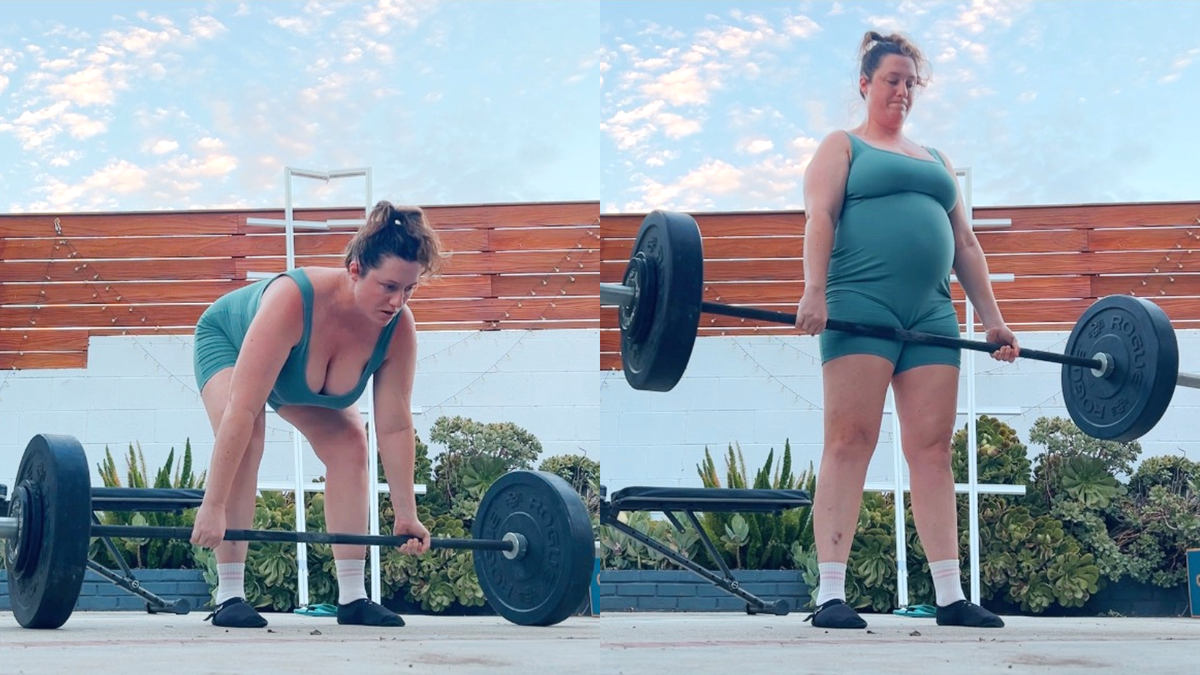The 'core workout' is a scam and it's time to stop

I grew up alongside the core workout. The panic about body fat, and especially belly fat, began in earnest when I was very young, and it led to all of us being attacked from all angles by the “low fat” foods of the early '90s. Eventually, the powers that be of the exercise world realized that there were more angles to this anxiety: This could sell workouts, too.
Where did the concept of a “core” even come from? It’s not something that existed when I was a kid. The earliest text references I can find (without a full deep dive into some library archives) come in textbooks and academic articles released around 2003 and 2004, one of which notes core strengthening had become “a major trend in rehabilitation.” The same paper notes that research on its effectiveness is “severely lacking,” other than in studies on low back pain.
But it didn’t matter, because the core workout scarcely even had to market itself. Around that same time, the relentless onslaught of photos of the midriffs of virtually every movie star and pop star under the age of 25 (and they were all under the age of 25) did all of the work, and everyone made the connections on their own. Never mind that physiotherapists thought of “the core” as “everything except our long appendages,” including our glutes and lats. The core became “our abs” or, at best, our waists. The “eight-minute abs” workouts of the VHS era gave way to “core workouts” tumbling one after another from the pages of magazines and, eventually, the Internet.
Core workout marketers realized they could draw on more established exercise modalities for clout: yoga, Pilates, ballet. Eventually, the core tail was wagging the yoga/Pilates/ballet dog, to the point that if a workout in those disciplines didn’t have, or even front-load, core work, it became suspicious. Where is the core work? How will I tone my abs? The lack of core work is awfully suspicious; it’s almost like you want me to be fat?
The problem with core workouts is that they are a hoax.[^1] Not only that, but we’ve had a decent number of former core workout purveyors admit they were a hoax, nothing except an empty strategy for going viral using body insecurities as a springboard.
How do we know core workouts are a hoax? This is a similar to dieting: We can reasonably conclude weight-loss diets, as popularly conceived by Weight Watchers et al., don’t work, given that there’s not a group of people anyone can point to who attribute their success or health to them in the long term. Likewise, I defy you to identify a single person who can honestly attribute their own core to “core workouts” alone. There aren’t people, there isn’t a person, who can step forward and point to their abs and say, “yeah, bro, I found the sickest core workout on TikTok.”
But then let’s go to the source. An influencer last year admitted she made up and posted core workouts for no reason other than they would go viral:
Ab workouts are posted purely for engagement. No, I never really did any of the ab workouts … they just got millions of views, I know that’s so shitty to say but it’s also so true. Ab workouts actually don’t even build abs whatsoever. Do your heavy squats, your deadlifts, your heavy compounds, trust me.
@hannahbarryuk Maybe I should delete hahahah
♬ original sound - Hannah barry
But what about my core functionality, you might be saying. My back hurts! My shoulders hurt! Can’t helping my core help the rest of my body? It just makes sense!
Sort of! But the thing about cores is that they don’t really need targeting, for most people, in order to train them. This is why the “core” is not a super-useful concept when we try to apply the bodybuilding concept of “targeting/isolating” muscles to it, because it’s so integrated to the rest of our body.
From one of the early articles on core functionality:
Core muscle activity is best understood as the pre-programmed integration of local, single-joint muscles and multi-joint muscles to provide stability and produce motion. This results in proximal stability for distal mobility, a proximal to distal patterning of generation of force, and the creation of interactive moments that move and protect distal joints.
In other words: The whole point of a core is that it needs to be able to connect and coordinate the other parts of the body in order to be effective. Cores can’t learn to be the solid, coordinating central conduit for movement by doing, for instance, a five-minute plank alone. By lifting weights using full-body movements, even a variety of dynamic movement, the core will be worked in the way that it’s designed for. It’s impossible to do, for instance, a squat, and not work your core. To wit: It’s a fallacy that core training is required to address low back pain. Doing almost any kind of varied exercise, including HIIT, including “general exercise,” including functional resistance training (lifting weights) helped people with low back pain.
But squats seems so hard, and a plank seems so easy, you might be saying. And I say: Wiggling my fingers in front of my face is easier still than that, and I wish that made back pain go away. But am I here to delude myself about the payoffs of what I’m doing, or to actually get some benefit from the time I’m putting in?
I know core workouts seem easy; I know they appear to be effective, based on the hot people doing them. But they are scams, every one, without exception, no matter how hot the person or how twisty the movement. I’d like to never hear about a core workout again. I’d love for them to one day be as obsolete as vibrating belt machines and the shake weight. It’s time to know in our hearts that any purported core workout is not going to be the solution it purports to be. The core workout is over; let it be over.






Eat
~Liftcord Pick of the Week: The people of the Liftcord have become enamored of this workout tracking app called Liftosaur. (I always find apps for tracking workouts to be too fiddly, and prefer just a notebook, but I trust no one's collective judgment more.)~
I love to see anyone strike a blow in the direction of “lean bulks,” and so I love this study that found higher caloric intakes promoted greater body protein mass in young men, more than from just eating more protein alone. Bros: You, also, have to eat.
Another study found that fasted exercise did not affect energy balance more than fed exercise (that is to say, in plain language terms, it did not “burn more calories” or cause more weight loss). Science is really on a roll this week!
Why 60 degrees feels different in fall than spring, for us outside-exercisers.

Drink
Petty ultrarunner behavior: One ultrarunner’s husband took to Wikipedia to boost her accomplishments and diminish those of her competitors.
“Strolls with stops use more energy” than continuous walking. On the one hand, I feel immensely validated that I used to especially hate running in the city and having to stop for red lights every five blocks. On the other hand, between this tip and one I linked a while ago about the benefits of walking backwards, we’re circling in on the perfect human cardio workout: walking backwards, stopping all herky-jerky every few minutes, up an incline, for 30 minutes. The future is now!
Ready to leave Malcolm Gladwell behind with the core workouts, to be honest.

Rest
Kurt Vonnegut made a board game after his first novel failed, heretofore unseen by the world. It’s called GHQ.
On picking apples in the lower Midwest.
I read an article about “estranged parents” a while ago, but the Estranged Parents YouTube channel takes things to another level.
Really enjoyed this sequence of articles: Culture is stuck. No, culture is not stuck. Actually, whether culture is stuck or not depends somewhat on how you define “culture.” (I do think culture is stuck.)
Can we talk about Sylvia Plath without talking about her abusive husband?
Speaking of abuse, Woman of the Hour goes really hard, and I'm glad that director Anna Kendrick is using the movie's press time to open up about her abusive relationship.
That’s all for this week! I love you for reading, thank you, let’s go—
[F1] Because someone’s going to say it: A core workout that promises ripped abs by doing that core workout alone is not the same as doing an ab day, or doing ab/core accessories as part of a complete training regimen breakfast. But most people who look to core workouts as an aesthetic or functional cure-all are not the ones who are targeted by viral core workout articles and social media posts.



Member discussion